She’s dressed James Bond and Harry Potter. She’s dusted off the cobwebs of the golden age of Hollywood and an aging Gloria Grahame, and she helped make us fall in love with ugly “jumpers” and wet rayon dresses on a girl named Bridget Jones. But now, costume designer JANY TEMIME is the talk of the town as she designs and recreates some icon looks for the world’s greatest entertainer, Judy Garland, and JUDY.
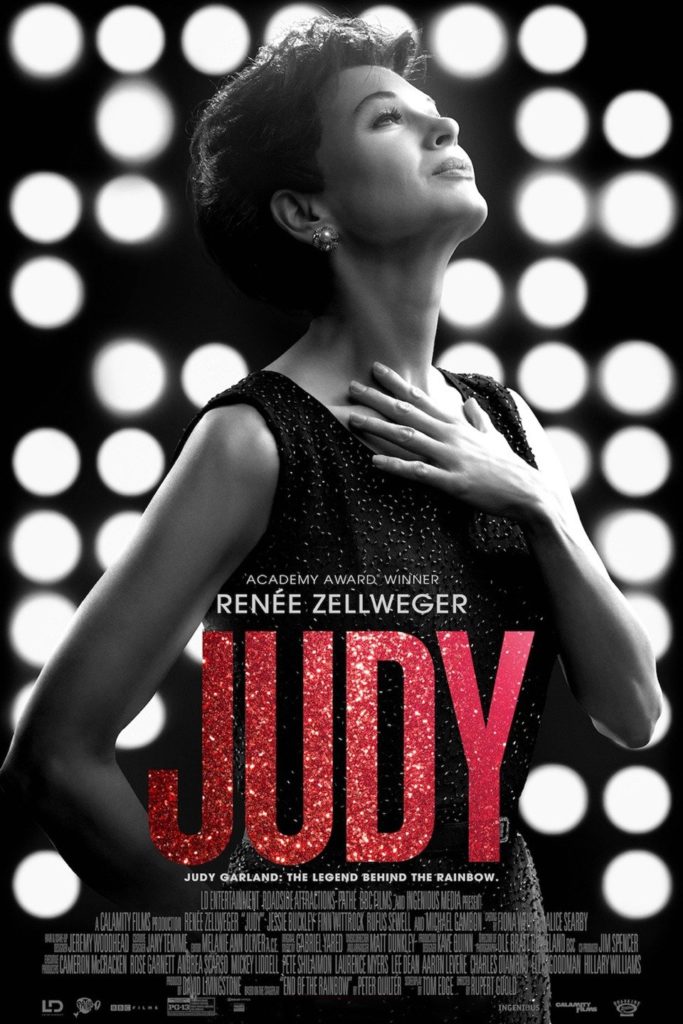
Set in winter 1968, JUDY focuses on the six-week time period when Judy Garland went to London for a sell-out run at The Talk of the Town. A tumultuous and pivotal period, Judy is at probably one of the lowest points of her life. She is no longer the fresh-faced Judy Garland skipping down the yellow brick road. She is fragile and battle weary. Time and life have taken its toll. She is broke. She has no place to live, nowhere to go. Ex-husband Sid Luft wants custody of their children Joey and Lorna. And because of her own personal demons of drugs and alcohol and unreliability, no one will hire her. Forced to leave her children with Sid, Judy takes the one gig offered to her with The Talk of the Town. She electrifies. She shows herself to be the Judy Garland of old when on stage and under the bright lights. She is larger than life. And she finds love with Mickey Deans, a man 25-years her junior.
While Renee Zellweger is flawless in her transformation as Judy Garland, much of that transformation relies on capturing Judy’s iconic looks and silhouette through costume which is where all eyes are on JANY TEMIME. Designing costumes that embrace the many facets of Judy Garland, Temime is on point with cut, color, fabric, and style be it a 1939 or 1968 Judy. Each look speaks to emotional moments in time that help define Judy Garland the entertainer, the mother, the star, the giddy girl in love, the woman. And in addition to costuming Zellweger as Judy Garland, it also falls to Temime to capture the overall Carnaby Street experience and most notably in designing for Finn Wittrock’s Mickey Deans, while going back in time to 1939 Hollywood and a dapper Mickey Rooney and imposing Louis B. Mayer.
During this exclusive conversation with JANY TEMIME talking about capturing the many facets of Judy Garland through costume for JUDY, her candor and humor shine while her passion for her craft and this particular project is palpable. Her own love and admiration for Judy Garland is not only woven into every stitch of costume we see on screen, but within her enthusiasm as she speaks.

Congratulations on impeccable, flawless work with JUDY.
Oh, thank you. This is so nice. It’s really nice what you said.
I have so long admired your work, Jany. You’ve gotten to dress James Bond. You’ve done Harry Potter. You’ve designed for some of the biggest name characters in cinematic history and now you get the cream of the crop.
Yeah, Judy Garland. The biggest of all!
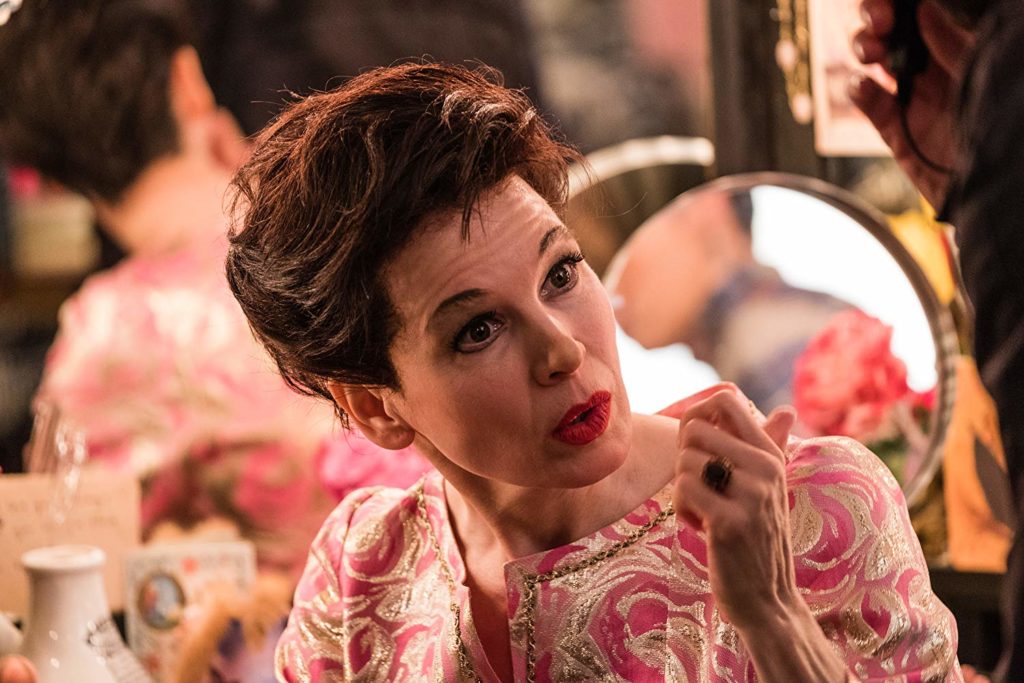
Just fabulous, Jany. Fabulous. For me, watching this film is really walking down memory lane.
Really? You were also a fan? You’re also a fan of Judy Garland?
A huge fan, huge. When I was a little girl in the ’60s my father would come and get me out of bed at night and bring me downstairs just to watch her performing on late night shows.
Okay, so you are like me! I love her so much! What did you think when you looked at the film? Were you happy? Did you think that we all know her memory or what was your thought?
Overjoyed, Jany, overjoyed.
Okay, well that’s wonderful, that’s wonderful.

I’d say 90% of it, it’s a combination of Renee with the hair and makeup but the clothing, your costuming, is key because so much about portraying Judy Garland is the silhouette, the iconic silhouette.
But that was Renee. You know, she had that posture. She took that posture, with the shoulder rounded and the stomach inside, what you get when you are not eating, and that’s the body that she created herself, the posture that she created herself, and we build up all the costume around that.
And that’s what I found so striking because typically when you have a very petite body like Judy Garland and with that spinal curvature and shoulder stoop, the clothing does not fit, but all of this clothing fit so well.
Ah, this was a miracle of tailoring! I was really so afraid that she would stand up and one day forget that posture and just stand straight. All the dresses would fall apart! I was so happy that she’s such a method actress. The minute she was putting the dress on, the minute she was coming on, immediately she had that posture and she was Judy Garland. She was thinking Judy Garland. But I think also that for her and for me it was a total admiration that we had for the character. We love Judy Garland for what she is as a woman. I mean, what an example of somebody who had always been fighting against adversity, always wanting, loving life, going for it. I mean besides the fact that she was an amazing singer, an amazing actress, amazing dancer, for her personality, you know? Sometimes she would never give up through the rest of her life. Getting married to this guy because it was a new hope. I think it’s such a human example and I really love her for that, for being such an incredible woman.
This particular six-week time period that the film covers, something that I love with this that really lets you showcase your talent, is that during this six-week time we get to see Judy Garland the mother, Judy Garland the stage performer, and then also once she falls in love with Mickey Deans and hooks up with him we then get to see you embrace that whole Carnaby Street kind of look of the ’60s.
Yeah, and also the little girl because then she was being that little girl, because actually the ’60s were very girlish and with the passion. The ’50s were the celebration of the woman but the ’60 were the celebration of the girl, and she certainly became a little girl with dresses to show, and little décolletage, and little things because she’s a woman in love with a guy 25 years younger than her, 20 years. Then she completely fit and she wants to reach that and she’s completely ridiculous. But that was one of her facets as well. She has so many personalities and it was hard in the film to show them all and to have something still looking like an ensemble, like trying to go smoothly from one style to another. I must say that I was very much helped by the constriction of the film where you have the stage costume and then the daily life costume. That helped me a lot to show the different aspects of her.
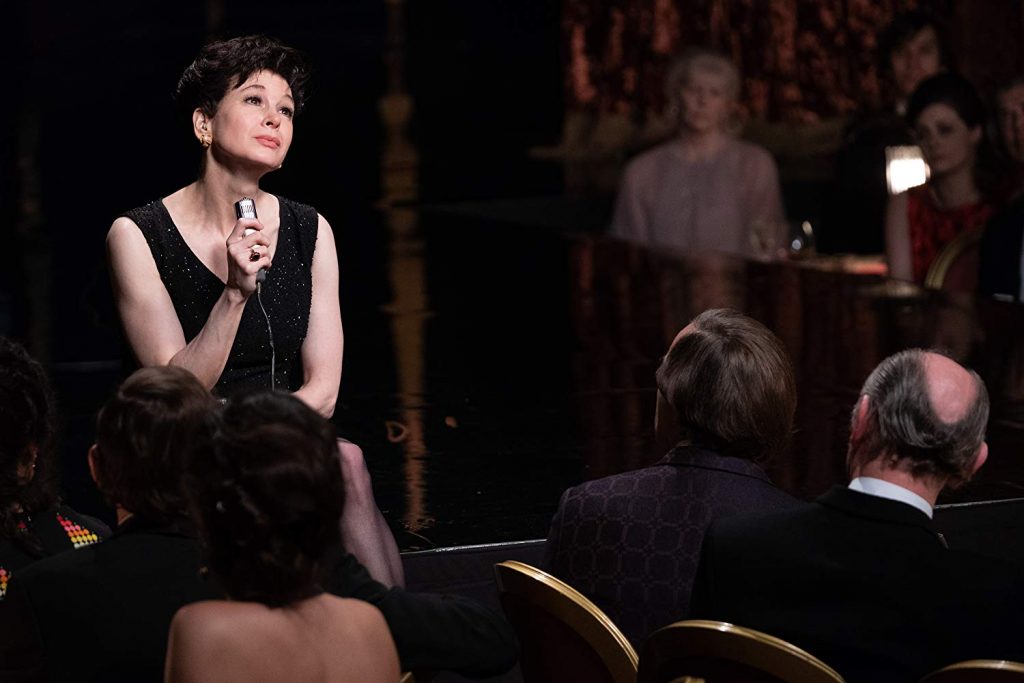
How did you go about deciding what costumes to really showcase here? I love the fact we have the seminal Judy Garland pantsuit look, which is so well known, and then scarves.
Yes. The scarf was because Renee wanted to insist on the fact that she was very precious about her voice, was very afraid of her voice. So the scarf shows a weakness and that’s why we wanted to put the scarf in the film. And then I did it on a very clownesque way by putting that red scarf on the side. I saw that online in a short film with her last husband, Mickey, who was putting that scarf on her. This is something that I saw on real footage and I caught the idea and I kept that sort of red scarf with that white suit because I thought it was very strong.
Very much so. All of the looks that you have are very, very strong, particularly the stage. The stage costumes are just stunning.
I showed the director different sketches and he picked up the ones that he wanted for every stage number. Do not forget that Rupert [Goold] is a theater director.
Oh, I know. I spoke with him at great length about this film, yes.
Exactly, exactly. So he has a huge knowledge of staging and he thought, “I want that dress for …” At the beginning, I didn’t want to do her opening in that big dress with the flowers. I wanted to do it with a pink dress and Rupert said, “No, I wanted to do the opening night in that big flower dress.” And I must say that he was never wrong because he had a very good stage knowledge and that helped me a lot because I didn’t know [about stage]. And then Renee wanted to sing “Over the Rainbow” in the little black dress and that was also something that at the beginning I thought, “Do you really want to finish in that? It’s such a sort of downer,” and then she said, “Yes.” Then when she sang that song with that little black dress. It was perfect and I realized how right she was. It could not have been anything else.
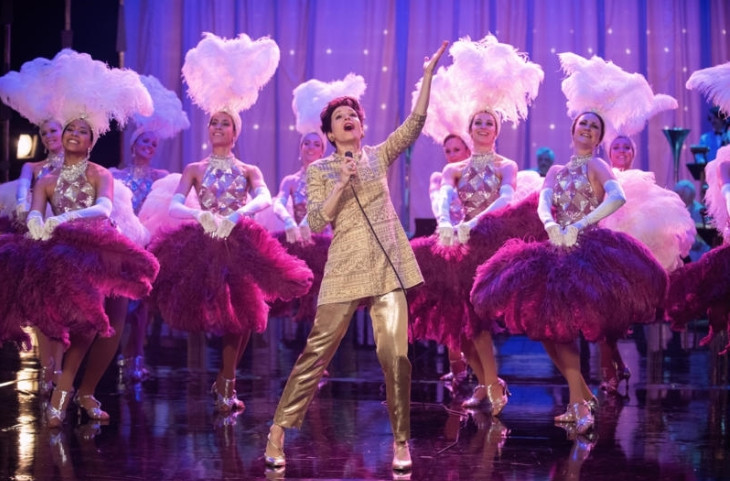
I’m curious, because you have such distinctive looks and fabrics here, how did you go about selecting the fabrications? We’ve got a lot of brocade, some beautiful metallic brocade.
Oh, I looked, I looked my love, I looked! In our business when you look for fabric, because you have to have so many multiples you need 80 meters, but with that film we had no money and a very short time to shoot it. And because we had no money we had seven weeks. So I didn’t need to have so many multiples. I had no multiples at all actually. So instead of looking for 60 meters, which is impossible and reduces your choices tremendously, I had just to look for four, five, or six meters. Then you can go into vintage fabric, behind the counter fabric, the little leftover. You can go to a much more artsy corner to find those fabrics than the High Street or the big manufacturer.
I worked in a fabric store through high school and college and have sewn for many decades. So when I see fabrics I get very excited by them.
Which you can because it was a lot of energy to find them. A lot of energy to find them, lots of energy. But I found them. I must say, London is very, very good for fabric, very, very good. We have lots of ethnic stores like African, Indian. We have lots of Indian shops in London and I could find beauty in those Indian shops, but again, small meters like four, five meters, which was just enough for me, six meters to do the shoot. The orange suit came from an Indian shop. The fabric with the big flowers is great. It’s beautiful.

It is truly beautiful. The orange suit is beautiful and paired with your green silk blouse with the built-on tie that hangs down.
I wanted something very strong next to it You know what it is when we wake up in the morning and we feel completely not there and we think, “Okay, I’m going to put on something really cheerful, strong colors, just to face the world”? That was my attitude towards her costume. I always felt that when she wants to look invincible where she’s very weak, that’s why she’s putting on those strong colors, sharp shapes. She is always trying to sell an image of herself that she isn’t.
You don’t show her in anything flowy. Everything is very sharply defined. It has sharp lines, be it the suits, the suit jackets, even the coat, that beautiful pink plaid coat with the ruffled cuff pink blouse.
It’s great, that is great. And really she wants to play a little girl. She’s a young lover, you know? It is pathetic but it suits her. She can carry everything. She had a number [being] a clown. She could sing that. She could be that. Judy Garland could be anything she wanted.
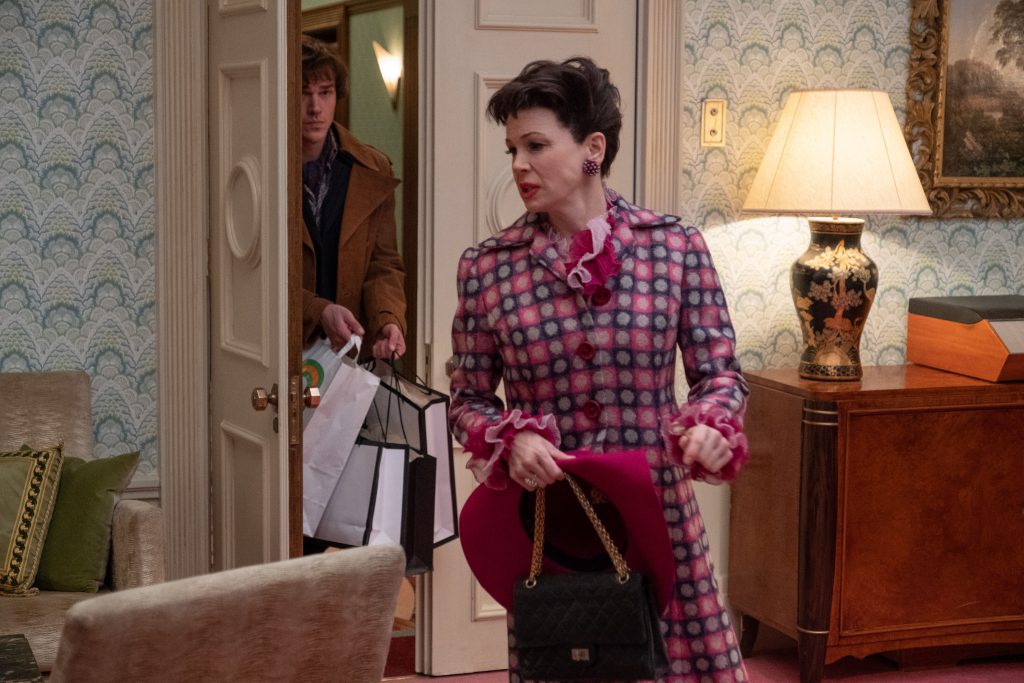
You also designed for Finn [Wittrock] as well and I have to say, some of the pieces that you put him in…Wow!
Aren’t they great? I had it all made. I was working from Angels, the costume house, and I found great original fabric. I opened a workshop in Hungary because I have lots of contacts there. You know, the prices are very reasonable, let’s put it that way. This is a nice way to put it. So I sent all the original fabric to them and they did designs of all the suits for Mickey. Angel did some other suit, but basically they were made in Hungary with a little tailor I know who is incredible. And then I really got inspiration of those very Carnaby shapes because I thought, “Yea, this guy would be dressed up. He’s like a small gigolo this guy so he will just try to look cool all the time. That is his thing.
You did that with the neck scarf for him, with some of the suits with the very wide lapels and the blue with the darker browns underneath. In all honesty, Jany, his clothing is as telling and gorgeous as what you put on Renee.
Yes, that’s the image he was selling, you know? He had to be a cool, beautiful pretty boy. He’s a pretty boy. Ooh la la, he was! And then she’s falling for him. This is what I find so incredible. With all her talent and then she just fell for a pretty boy who was promising her the moon.

Now I’m curious, did you have to consider the needs of the cinematographer with the lighting?
Yes. We had a young DP [Ole Bratt Birkeland], a young guy, and I must say he did an excellent job. We had not so much time but I showed him when we did some tests, I showed him the color and he was very happy with it.
For the “mom” clothes, I love the look. The cigarette pants and the button-down shirts.
That was on purpose. I used slacks because she’s an American woman. A woman in late ’60s in England would never wear a trouser at home. That was not the thing. You have a trouser suit when you are buying and out on Carnaby Street when you want to go out, that’s something else, but to wear with slacks like an American housewife that was not at all the English spirit, in the European spirit. I wanted to show that she was an American housewife, she wanted to be an American housewife. That’s why I used the slacks to give her the American look; not to forget that she’s an American. And then I dressed her in much more softer colors when she’s a mom because that’s another side of her.

That painted button-down shirt that she wears is gorgeous!
Isn’t that amazing? That’s a vintage one. I found it. I thought, “Oh my God!” I couldn’t believe it, I couldn’t believe it. That was beauty.
I love that whole button-down shirt look. She looked almost like a fresh-faced Doris Day.
Yes, but I wanted that. I’m so happy that you see it. I wanted a little bit of that sort of Doris Day look because this is what she wants to be. She wants to be the perfect housewife. The mother baking cookies for the kids and then doing the garden. This was a side of her that she was aspiring to and never getting.
It’s all just so beautifully done, Jany. Of course, my favorite looks are the celebration of the bateau neckline. I think that looks so stunning. And it looks gorgeous on Renee. It suits her so well.
Renee wears clothes beautifully. She’s an actress and a very convincing actress and I can tell you she’s one of the most wonderful people to work for.

I’m curious about the 1930s Judy Garland, dressing her, because that’s a whole different look for the young Judy, taking a real step back in time. Were there any influences that you looked at for those outfits?
Yes, yes, yes! All the documentation that I had. I wanted to give a piece of her. First, we were not allowed at all to use the costumes of the real Judy Garland costume in this film. We were not allowed because you couldn’t get the copyrights for it. So I had to invent, redesign costumes that could’ve been used for that sort of film in that time. And I just did that. A little bit “gougy” because they always tried to make her look younger than what she was. So I always tried to put the waist a little bit higher and then to give a little bit of her slight clumsy look as a little girl, like she has been growing too fast for her clothes.
It looks beautiful. And it’s in the same vein as you’re dressing our young Mickey Rooney. You dressed him up, which is what Mickey Rooney always did. He always ran around in suits as a kid.
Oh, yes, yes, yes, yes, yes, yes, yes! That was actually easier to do than Judy Garland’s because that was a little bit straightforward. You get an inference of the 1930 Hollywood film and then you try to recreate it. I thought it was straightforward. Of course, I could’ve done it badly, but it worked out well. But it was less of a design job than Judy Garland when I had to make very specific choices and I had to explain the whole personality of a woman within 20 costumes. That was a lot harder.
Do you have a favorite costume for this film?
Well, I think it has to be the orange suit. I love that suit. I wanted to use that suit that she actually used in “The Talk of the Town” as a show costume, but I wanted to use it for the opening of the film where she’s in Los Angeles. So I called the IG from “The Talk of the Town” and I just used it to open the film to immediately put a spectator in that concept of Judy try[ing] very hard to look very strong and together.
by debbie elias, exclusive interview 11/12/2019












